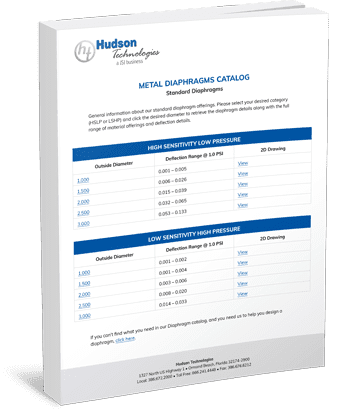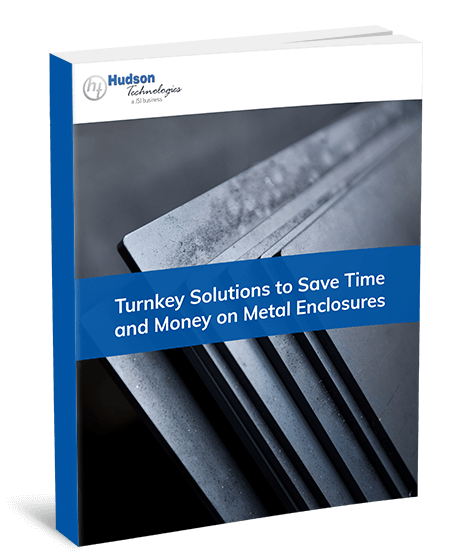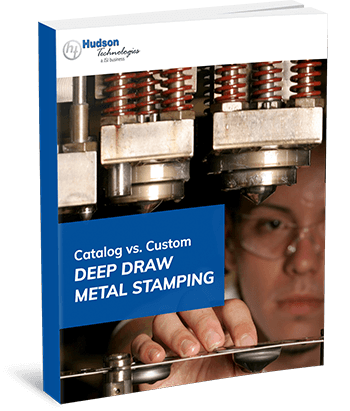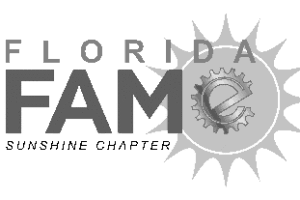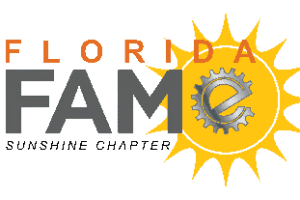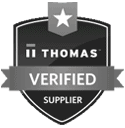Hudson Technologies’ Hydraulic Press
- Home
- Hydraulic Press
Request a Design Worksheet
Workhorses in the stamping and deep drawing industry, hydraulic presses are one of the most commonly employed types of equipment in the manufacturing sphere.
These presses utilize a hydraulic cylinder to generate the compressive force required to shape metal, and are ideal for blanking, clinching, deep drawing, forging, molding, punching, and other similar metal forming operations.
Hydraulic presses are especially well suited to deep drawing — a specialty of Hudson Technologies — since they can be easily optimized for the irregular geometries required by common deep drawn components.
Hydraulic Press Features and Capabilities
At Hudson Technologies, we maintain a fleet of more than 100 different presses, including a number of hydraulic presses with tonnages ranging from 3 to 500.
Using a hydraulic forming press is the ideal production method for deep drawing, as they are capable of applying either regular, consistent pressure or variable controlled pressure depending on the needs of the deep drawn part. The flexibility of the draw cycle in hydraulic forming allows for the optimization of material flow, resulting in a higher quality deep drawn part. Some stamping methods, such as mechanical draw processes, have a quicker stroke but cannot produce components as deep drawn as hydraulic presses can.
After deep drawing on a hydraulic press, secondary machining services can be performed. Hudson Technologies is equipped with a number of CNC mills and lathes and other secondary processing equipment to meet the specific needs of our clients.
A Quick Case Study: Deep Drawn Stainless Steel Enclosures
To better illustrate our hydraulic press capabilities, take this case study as an example: One of our clients approached us about producing cryogenic pump housings, which had to be manufactured from a heavy-gage stainless steel. The part design required that these housing be manufactured at highly precise variable deep draw speeds and pressures.
Hydraulic presses were the best solution for this request, as they could draw deep enough for the cryogenic pump housing design and were capable of keeping the very tight wall thickness tolerances required. Utilizing hydraulic presses also allowed for great control over the draw sequence, resulting in consistent dimensional attributes.
Hudson’s Metal Forming Press Capabilities
Unlike mechanical presses, which experience loss of tonnage in higher portions of their stroke due to loss of mechanical advantage, using hydraulic presses for deep drawing allows for consistent tonnage in any portion of their total stroke. This allows Hudson to draw to depths as deep as 12 inches, with a high degree of accuracy and control.
Working on a design project or need assistance with high-volume production? Contact us today and an in-house metal forming expert will be in touch to discuss how we can help.













